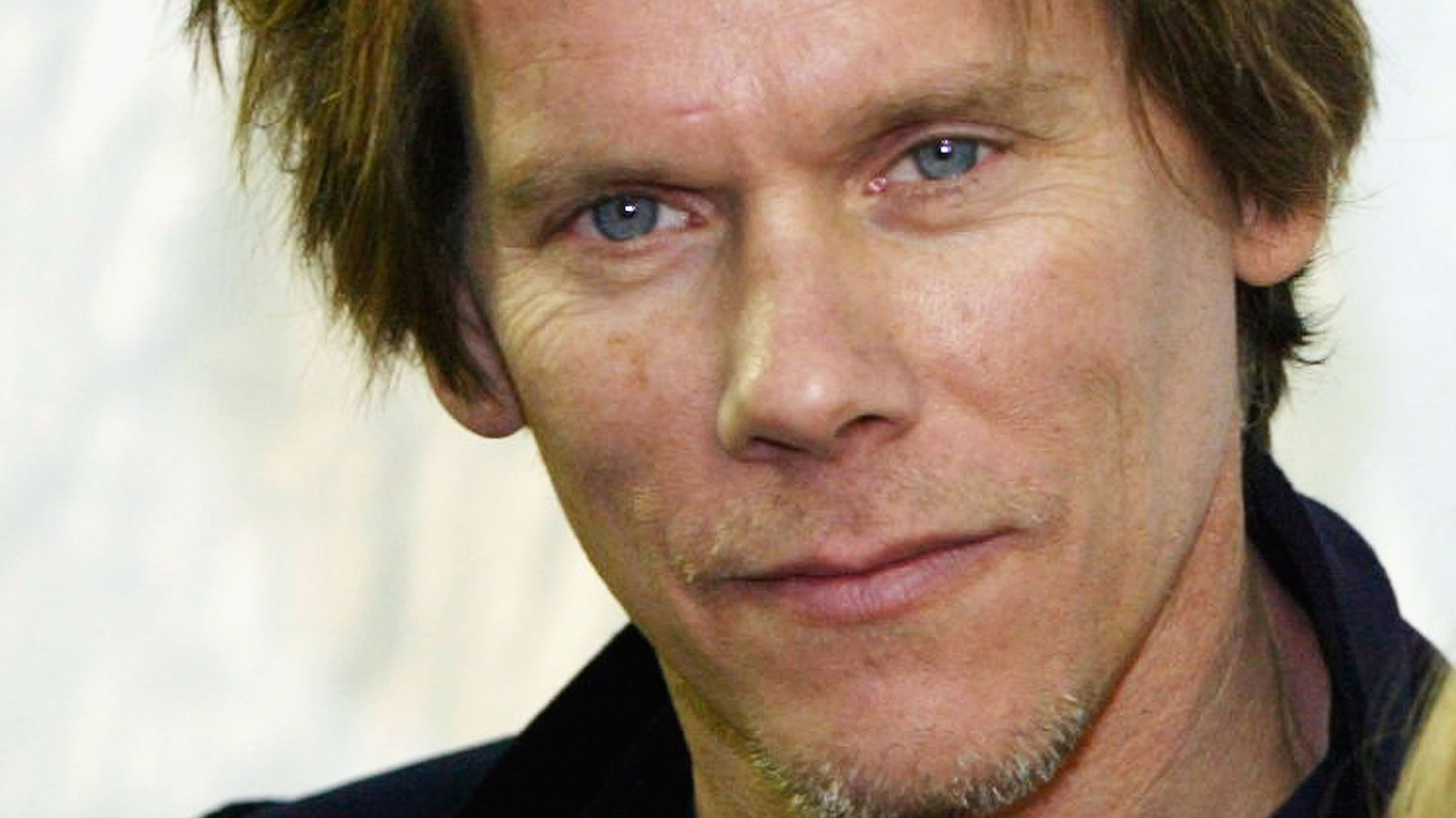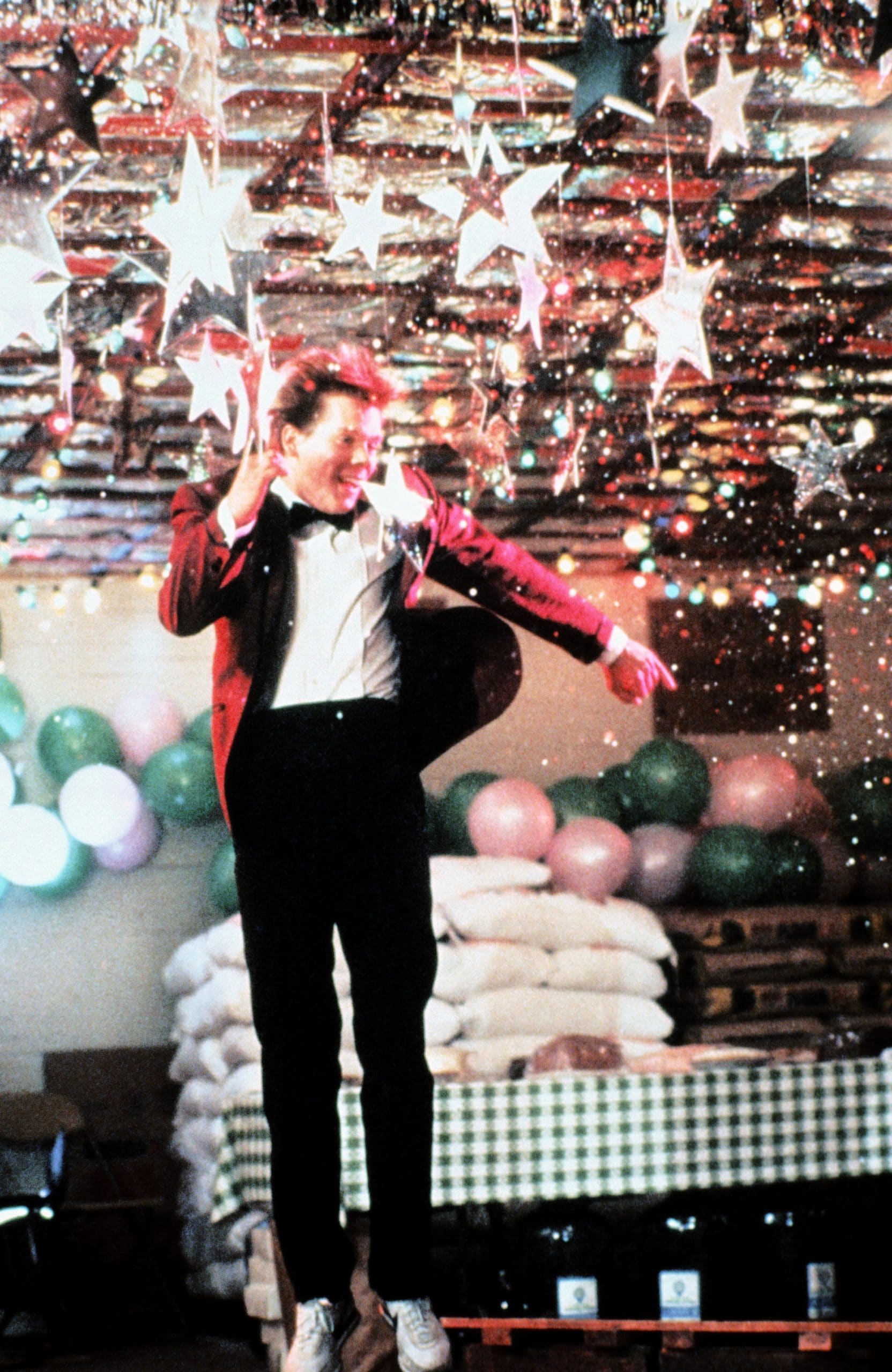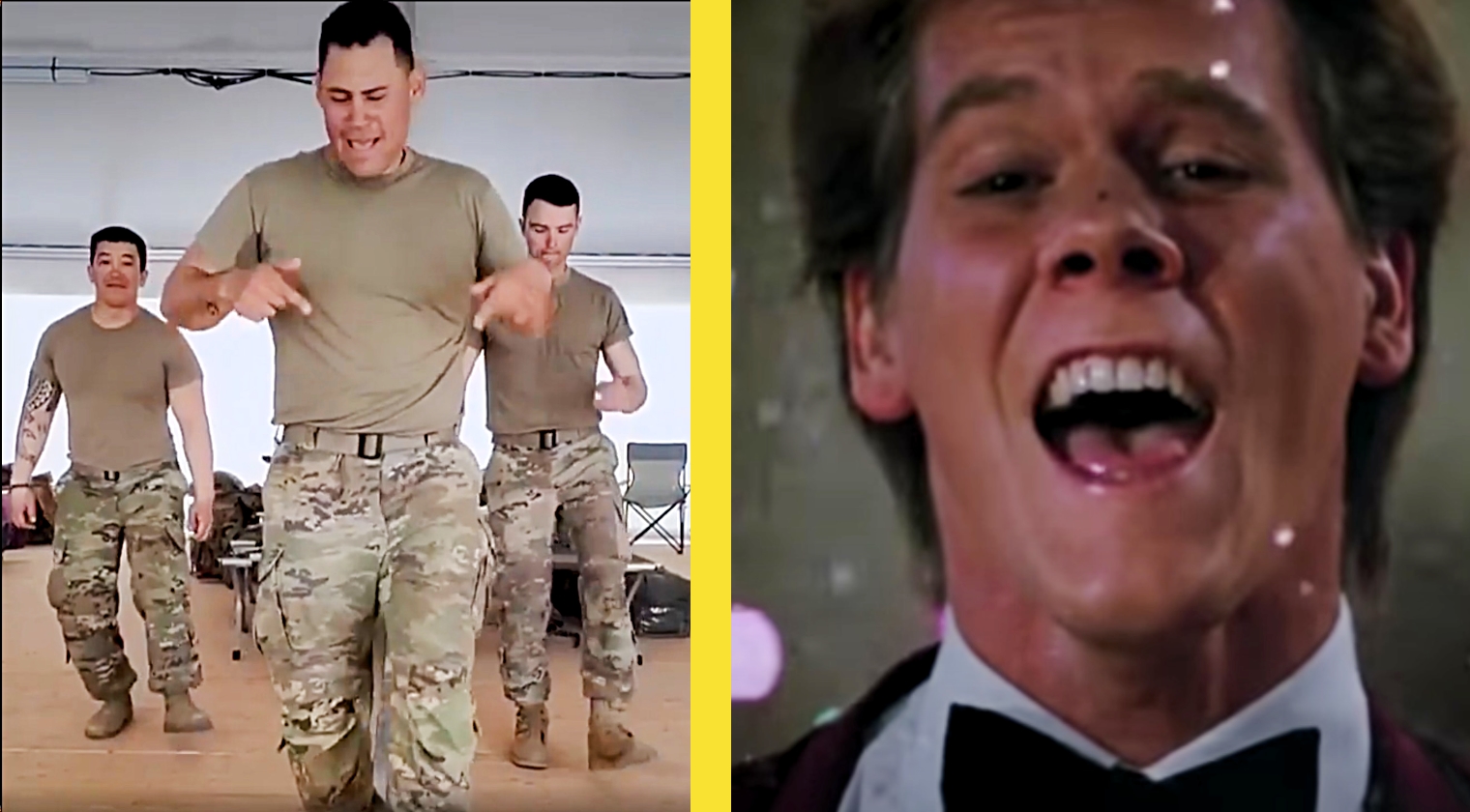Did Kevin Bacon Do His Own Dancing In Footloose? Unraveling The Iconic Moves
The 1984 film "Footloose" exploded onto the cultural scene, captivating audiences with its rebellious spirit, infectious soundtrack, and, most notably, its electrifying dance sequences. At the heart of this cinematic phenomenon was Kevin Bacon, who portrayed the dance-loving protagonist, Ren McCormack. For decades, a persistent question has echoed through pop culture discussions: did Kevin Bacon do his own dancing in Footloose? This isn't just a trivial detail for movie buffs; it speaks to the authenticity of a performance that defined a generation and solidified Bacon's status as a Hollywood icon.
The allure of "Footloose" lies not only in its compelling narrative of a city boy challenging small-town conservatism but also in the sheer kinetic energy of its dance numbers. Ren McCormack's defiant, often acrobatic, moves became synonymous with freedom and self-expression. As viewers watched Bacon contort, leap, and spin across the screen, a natural curiosity arose: was that truly him executing every single step, or was there some movie magic at play? Understanding the answer requires a deeper dive into the world of film production, the demands of the role, and the dedicated artists who bring these cinematic visions to life.
Table of Contents
- The Enduring Legacy of Footloose: A Cultural Phenomenon
- Kevin Bacon: A Star on the Rise
- The Question That Lingers: Did Kevin Bacon Do His Own Dancing in Footloose?
- The Art of Movie Magic: Stunt Doubles and Dance Doubles in Film
- Unpacking the Footloose Choreography: Bacon's Role and the Collaborative Effort
- Kevin Bacon's Own Words on His Footloose Dancing
- The Impact of Authenticity: Why It Matters to Fans and the Legacy of a Performance
- Beyond Footloose: Kevin Bacon's Continuing Connection to Dance and Pop Culture
The Enduring Legacy of Footloose: A Cultural Phenomenon
"Footloose" arrived in cinemas in 1984, a vibrant explosion of youthful rebellion set against the backdrop of a conservative American town. Directed by Herbert Ross, the film told the story of Ren McCormack, a Chicago teenager who moves to the small, religious town of Bomont, where dancing and rock music have been outlawed. Ren's struggle to challenge the town's strictures and bring back the joy of movement resonated deeply with audiences, particularly teenagers, making it an instant box office success and a cultural touchstone.
More than just a movie, "Footloose" became a phenomenon. Its soundtrack, featuring hits like Kenny Loggins' title track, Deniece Williams' "Let's Hear It for the Boy," and Bonnie Tyler's "Holding Out for a Hero," dominated the charts and became anthems for a generation. The film tapped into universal themes of freedom, individuality, and the clash between tradition and progress. But perhaps its most memorable aspect was the dance itself – a raw, energetic expression of teenage angst and exuberance. The dance sequences were pivotal to the film's narrative, serving as both a form of rebellion and a means of emotional release for Ren and his friends. This heavy reliance on dance naturally led to intense scrutiny of the lead actor's performance, particularly the question: did Kevin Bacon do his own dancing in Footloose?
Kevin Bacon: A Star on the Rise
Before "Footloose," Kevin Bacon was a promising young actor, but not yet a household name. He had appeared in films like "National Lampoon's Animal House" (1978) and "Diner" (1982), showcasing his versatility and charm. However, it was the role of Ren McCormack that truly propelled him into the spotlight, transforming him into a bona fide teen idol and a serious leading man. His portrayal of Ren was nuanced – a mix of vulnerability, defiance, and magnetic charisma. But it was his physical performance, particularly his ability to convey emotion through movement, that truly captivated audiences and made the character iconic.
Taking on the role of Ren McCormack was a significant challenge for Bacon. While he had some background in gymnastics and athleticism, he was not a professionally trained dancer. The role demanded not just acting prowess but also a convincing physical transformation into a character for whom dance was a fundamental form of self-expression. This commitment to embodying Ren's spirit, both emotionally and physically, was crucial to the film's success and further fueled the public's curiosity about the authenticity of his dance moves. The question, did Kevin Bacon do his own dancing in Footloose, became central to understanding the depth of his performance.
Personal Data & Biodata
Here's a brief overview of Kevin Bacon's personal data and biodata:
| Category | Detail |
|---|---|
| Full Name | Kevin Norwood Bacon |
| Date of Birth | July 8, 1958 |
| Place of Birth | Philadelphia, Pennsylvania, U.S. |
| Occupation | Actor, Musician |
| Spouse | Kyra Sedgwick (m. 1988) |
| Children | 2 (Travis Bacon, Sosie Bacon) |
| Notable Roles (Pre-Footloose) | Chip Diller in "National Lampoon's Animal House" (1978), Timothy Fenwick Jr. in "Diner" (1982) |
The Question That Lingers: Did Kevin Bacon Do His Own Dancing in Footloose?
This is the million-dollar question that has fascinated fans for decades, and the answer is a nuanced one: Yes, Kevin Bacon did a significant amount of his own dancing in "Footloose," but he was also expertly supplemented by professional dance doubles. It's a testament to his dedication and the collaborative nature of filmmaking that the final product appears so seamless and authentic. The film's director, Herbert Ross, was himself a choreographer, which meant the dance sequences were meticulously planned and executed. Bacon underwent intense training to prepare for the role, working with choreographer Lynne Taylor-Corbett to master Ren's distinctive style.
Bacon's commitment to the role was unwavering. He spent weeks in rigorous rehearsals, learning complex routines and developing the physical stamina required for the demanding dance numbers. He poured his energy into embodying Ren's frustration and joy through movement, ensuring that every step felt emotionally charged. However, Hollywood filmmaking, especially for physically demanding roles, often employs specialists to achieve specific shots or perform moves that are beyond the lead actor's primary skillset or too risky. This is where the dance doubles came into play, contributing to the overall brilliance of Ren McCormack's on-screen presence. So, while the spirit and much of the execution were undeniably Bacon's, a team of talented individuals helped bring the most challenging moments to life.
The Art of Movie Magic: Stunt Doubles and Dance Doubles in Film
The use of stunt doubles and dance doubles is a long-standing and essential practice in the film industry. It's not a secret or a form of deception, but rather a practical necessity that allows filmmakers to achieve incredible feats on screen while ensuring the safety of their lead actors and maintaining production schedules. Stunt doubles perform dangerous actions like falls, fights, or car crashes, protecting the principal actors from injury. Dance doubles, similarly, are brought in for highly specialized, acrobatic, or technically complex dance moves that require years of professional training in specific disciplines like ballet, gymnastics, or breakdancing.
The integration of doubles is a meticulous process. Directors and choreographers work closely with the lead actor and their doubles to ensure continuity in appearance, movement style, and character. Often, shots are carefully framed to obscure the double's face, or quick cuts are used to blend the performances seamlessly. This collaborative approach allows films to push creative boundaries, delivering breathtaking sequences that would otherwise be impossible or prohibitively expensive to produce. In the case of "Footloose," the decision to use dance doubles was not a reflection of Kevin Bacon's inability, but rather a strategic choice to enhance the dynamic and visually spectacular nature of Ren's dance sequences, ensuring they met the high standards set by a director with a background in choreography.
Unpacking the Footloose Choreography: Bacon's Role and the Collaborative Effort
The choreography in "Footloose" was a blend of various styles, from classic jazz and contemporary dance to more raw, improvisational movements that reflected Ren's rebellious spirit. Kevin Bacon immersed himself in this training, dedicating himself to learning the routines. He spent countless hours in dance studios, perfecting his posture, timing, and the emotional expression required for each scene. His dedication meant that for the vast majority of the film's dance sequences, it was indeed Kevin Bacon himself on screen, performing the core movements and conveying the character's energy.
However, for certain moments that required highly specialized skills, the production brought in professional dancers and gymnasts. These individuals were experts in their respective fields, capable of executing moves that would take years to master. Their contributions were strategically integrated into the sequences, often for quick, explosive moments that added an extra layer of visual flair and dynamism. This collaborative approach ensured that Ren McCormack's dancing felt both authentic to Bacon's performance and visually spectacular, achieving the high-octane energy that the film demanded.
The Iconic Warehouse Scene: A Deep Dive into Ren's Rage and Rhythm
Perhaps the most famous and talked-about dance sequence in "Footloose" is the warehouse scene. This moment is pivotal for Ren's character; after being told he can't dance, he goes to an abandoned warehouse to vent his frustrations through an explosive, almost violent, solo dance. It's a raw, emotional outpouring set to the driving beat of "Never." This scene perfectly encapsulates Ren's character and the film's central theme.
For this particular sequence, the question did Kevin Bacon do his own dancing in Footloose becomes even more specific. While Bacon performed the vast majority of the emotional, expressive dancing in the warehouse, certain highly acrobatic and gymnastic moves were executed by doubles. For instance, the backflip off the beam, the complex spins, and some of the more extreme tumbles were performed by professional gymnasts and dancers who specialized in those specific skills. The genius of the editing and choreography lies in how seamlessly these different performances were cut together, making it appear as one continuous, incredibly athletic performance by Bacon. The scene is a masterclass in cinematic illusion, combining Bacon's powerful acting and core dancing with the specialized talents of his doubles to create an unforgettable moment.
Behind the Scenes: The Talented Doubles Who Contributed
While Kevin Bacon was the face and heart of Ren McCormack's dancing, several talented individuals contributed their physical prowess to the more challenging moments. Among the most notable were:
- **Peter Tramm:** A professional dancer who served as Bacon's primary dance double. Tramm performed many of the more technically complex dance steps and turns, particularly in the longer, more choreographed sequences.
- **Jim McArthur:** A gymnast who was brought in for the highly acrobatic moves, especially in the warehouse scene. He executed the backflips and other gymnastic feats that required specialized training beyond typical dance.
- **Kenny Wormald:** While not a double for Bacon in the original film, it's worth noting that Wormald, a professional dancer, played Ren McCormack in the 2011 "Footloose" remake, highlighting the continued importance of dance skill for the role.
Kevin Bacon's Own Words on His Footloose Dancing
Kevin Bacon himself has been quite candid over the years about his dancing in "Footloose." He readily acknowledges that he had dance doubles for certain specific moves, but he also emphasizes the extensive training he underwent and the significant amount of dancing he performed personally. In various interviews, Bacon has stated that he trained for weeks, sometimes up to eight hours a day, to get into shape and learn the choreography. He has often recounted the intense physical demands of the role, highlighting his commitment to making Ren's dancing believable and emotionally resonant.
Bacon has humorously referred to the doubles as "the stunt guys who were doing the really hard stuff," particularly mentioning the backflip in the warehouse scene as something he couldn't do. He's proud of his contribution, stating that he did "90 percent" of the dancing, especially the acting through dance. His honesty about the use of doubles doesn't diminish his performance; rather, it provides a realistic insight into the collaborative nature of Hollywood filmmaking and the dedication required to bring a character like Ren McCormack to life. His transparency further solidifies the answer to did Kevin Bacon do his own dancing in Footloose – a resounding yes, with expert assistance.
The Impact of Authenticity: Why It Matters to Fans and the Legacy of a Performance
The persistent question about whether did Kevin Bacon do his own dancing in Footloose highlights a deeper desire among audiences for authenticity in performance. When viewers connect with a character, they want to believe in the actor's commitment to every facet of that role. For Ren McCormack, dance was not just a skill; it was his voice, his rebellion, and his therapy. The idea that Bacon truly embodied that physical expression adds another layer of depth and credibility to his portrayal.
While the use of doubles is common and understood within the industry, for fans, knowing the extent of an actor's personal involvement can elevate their appreciation for the performance. It speaks to the actor's dedication and the artistry involved in their craft. In "Footloose," Bacon's visible effort, his emotional investment in the movements, and his undeniable charisma made Ren's dancing iconic. The fact that he personally performed so much of it, even with the aid of doubles for specific stunts, reinforces the authenticity that made the film resonate so strongly and continues to captivate new generations of viewers. It's this blend of raw talent, hard work, and cinematic collaboration that truly defines the legacy of Ren McCormack's moves.
Beyond Footloose: Kevin Bacon's Continuing Connection to Dance and Pop Culture
Even decades after "Footloose," Kevin Bacon's connection to dance and the film remains a significant part of his public persona. He has often embraced this legacy, participating in various pop culture moments that reference his iconic role. One notable example is his appearance on "The Tonight Show Starring Jimmy Fallon" in 2014, where he recreated Ren's famous warehouse dance sequence, complete with a perfect imitation of the original moves, albeit with some comedic self-awareness. This performance went viral, demonstrating the enduring appeal of "Footloose" and Bacon's willingness to lean into his past.
Furthermore, the "Six Degrees of Kevin Bacon" game, a cultural phenomenon itself, indirectly ties back to his widespread recognition, much of which was cemented by "Footloose." The film's influence extends beyond just dance; it's a testament to the power of music, rebellion, and the pursuit of freedom. Bacon's continued association with the film, and his occasional returns to its dance roots, serve as a reminder of the powerful impact "Footloose" had on his career and on the broader landscape of pop culture. The question, did Kevin Bacon do his own dancing in Footloose, remains a fascinating piece of cinematic history, but his performance, aided by dedicated doubles, created an unforgettable character that continues to inspire and entertain.
In conclusion, the answer to the enduring question, did Kevin Bacon do his own dancing in Footloose, is a resounding yes, with the crucial understanding that he was expertly supported by professional dance and stunt doubles for the most technically demanding and acrobatic sequences. Kevin Bacon's commitment to the role of Ren McCormack was extraordinary, involving extensive training and a deep emotional investment in the character's physical expression. He performed the vast majority of the core dancing, infusing Ren's movements with the raw emotion and rebellious spirit that defined the character.
The use of doubles, a standard practice in Hollywood, allowed the film to achieve breathtaking visual feats that would have been impossible for a single actor to accomplish. This collaborative effort, combining Bacon's acting prowess and significant dance contribution with the specialized skills of others, created the seamless and iconic dance sequences that have captivated audiences for decades. "Footloose" remains a testament to movie magic, where talent, dedication, and teamwork converge to create something truly unforgettable. We hope this deep dive has shed light on the complexities behind Ren McCormack's legendary moves. What are your favorite dance moments from "Footloose"? Share your thoughts in the comments below, and if you enjoyed this exploration, consider sharing it with fellow movie enthusiasts!

Did Kevin Bacon Do His Own Dancing In Footloose?

Kevin Bacon And Kyra Sedgwick Do The TikTok 'Footloose' Challenge

Kevin Bacon Honors Veterans Day With Soldiers Dancing To "Footloose"